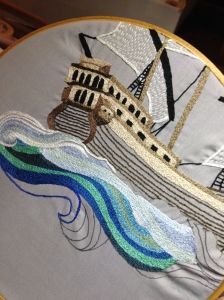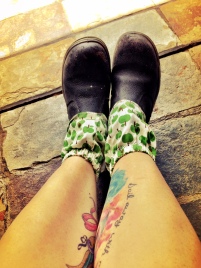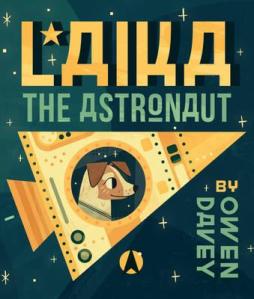On the weekend, a dear friend asked me about the embroidery technique I had used in some recent pictures I posted to Facebook.
Luckily, I had run a tutorial on embroidery some years ago for a Brown Owl’s session, so had already done a tutorial sheet, which I will happily share with you.

The image I posted to facebook
Design
Let me just point out here that I pretty much taught myself to embroider, and I am sure that if an embroidery elder saw my work, she (or he, I guess) would probably have a fit! I like my embroidery to be fairly fluid, freehand and I am not too worried if the fabric puckers, or the patterns shows through the stitching. I enjoy the process.
Usually my designs are in block colours and fairly simple, with very few details or small areas (although I am getting better at that). I usually free hand my design using a normal fineline, black art pen or a non-fading fabric pen (keep in mind you might want to wash the final product, so you have to use something that won’t run….much). I find the non-fading types are the best as you might take months to complete your embroidery, and you don’t want your design to fade halfway through. The other method I use is to sketch the design on paper, then use some transfer paper from Sublime Stitching (they have white transfer paper too, so you can use dark fabric). By the way, these guys are fantastic! they have the radest patterns (their tag is ‘this ain’t your Gramma’s embroidery’!) and the most beautiful threads and accessories. Definitely worth checking out, especially if you are not so confident at drawing/designing and you don’t want to contemplate the complete yawn-fest of designs at spotlight and lincraft.
Fabric
I know there are special embroidery fabrics out there, but they seem to cost a fortune. I usually go for something light, cotton or linen, with a reasonably large weave. Seems to work just fine.
Needles.
I use a size 6 embroidery needle. But experiement. That might not work for you.
Fabric onto hoop
You will need a hoop. I go for the good old fashioned cane ones, as they are cheap and you can usually find them at the op shop.
– Separate the two sections of hoop
– Position fabric over smaller section of hoop and place larger hoop over top
– Tighten screw half way
– Pull fabric so that fabric has no creases
– Tighten screw all the way so that fabric won’t move as you are sewing.
If tightening that ridiculous metal screw on the embroidery hoop is too much for your fingers, get one of those rubber page turner things that secretaries use, turn it inside out, place it over the screw and the little rubber bumps will turn it for you.
Thread
Embroidery thread (sometimes called ‘floss’) is made up of lots of individual strands. Depending on what kind of stitch, or thickness you need, one or more can be threaded. I use one strand doubled over for most of my work. Check out markets and op shops too. Sometimes people get rid of their old thread.
– To help separate the threads, pat the top of your length, the threads will part making it easier to separate.
– To get one thread out, simply grab the thread you want in your fingers with one hand and use the other hand to pull the other threads down. Do it slowly and it helps not to have a super long length.
– Don’t forget to knot the thread.
Time to stitch!
There are heaps of complicated stitches out there. If your are only wanting to fill in a design, with no fancy raised bits, these stitches will get you there.
Split Stitch
Is pretty much all I use! its fast. And sexy.
BAck Stitch
Satin Stitch
Check out YouTube- there are so many instructional videos on there it isn’t funny! Sublime Stitching also has a delicious range of books.
Some Tips:
- Don’t drink red wine and embroider. Drink white, it doesn’t stain.
- Be super OCD about your threads. If you get serious, you will end up with ton and keeping them in containers or bags will mean they won’t get tangled
- Be kind to your eyes, especially if you embroider at night. A good lamp is the best.
- Be prepared to stuff up. knotted threads, lame designs, paw prints on your fabric are all apart of the journey- go with it!
- Find a good framer. If you create something amazing, you’ll want to preserve it. (I use these guys)

Example of an Embroidery Elder’s work- my great Grandmother did this… by candle light
Please share! If you are an Embroidery Elder, I would LOVE to hear from you!













